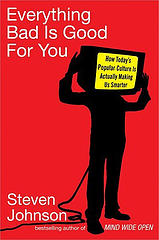A week after the May 9 debut of The Huffington Post, Nikki Finke delivered this bitter assessment in LA Weekly:
Judging from Monday’s horrific debut of the humongously pre-hyped celebrity blog the Huffington Post, the Madonna of the mediapolitic world has undergone one reinvention too many. She has now made an online ass of herself. What her bizarre guru-cult association, 180-degree right-to-left conversion, and failed run in the California gubernatorial-recall race couldn’t accomplish, her blog has now done: She is finally played out publicly. This website venture is the sort of failure that is simply unsurvivable. Her blog is such a bomb that it’s the movie equivalent of Gigli, Ishtar and Heaven’s Gate rolled into one. In magazine terms, it’s the disastrous clone of Tina Brown’s Talk, JFK Jr.’s George or Maer Roshan’s Radar.
Finke was not alone in her prediction of disaster. And at the time, it wasn’t so unreasonable to suspect Arianna Huffington’s experiment with celebrity group blogging might crash and burn spectacularly (The Guardian ran a very funny satire in anticipation). But by now it’s clear that not only are reports of Huffington’s death greatly exaggerated, but that something of value has been created.
The site is getting a load of traffic (a million and a half a month as of September, probably significantly more by now). As expected, it is snarky, eclectic and irreverant. What’s surprising is that Huffington’s rolodex of 250-plus occasional bloggers has managed to fill it with serious, thoughtful discussion. Many of the biggest names have failed to make much use of their soapbox (Norman Mailer has posted twice, Ellen Degeneres only once (about horses), both at the beginning of the run). What has built the site into a popular daily destination is not the promise of star-spun wisdom, but the insight provided by the more dedicated bloggers, many of them lesser-known figures with a great deal of expertise in a given area. What you end up with is a nice mix of opinion, satire, gossip, and serious analysis of current events — a kind of heightened public square.
In yesterday’s Washington Post, against the steady hum of online intrigue about Judy “run-amok” Miller, and the sound of millions of nails being gnawed in anticipation of what hopes to be a major league indictment of Rove and/or Libby, the afore-mentioned Tina Brown observed:
For Arianna Huffington, the Miller story has been to her newly birthed blog, the Huffington Post, a miniature version of what O.J. Simpson was to cable news.
And she’s right. Over this past week, something seems to have crystallized. Amidst all the head-scratching following the Times’ marathon coverage of the Judith Miller imbroglio this Sunday, the bloggers, not the press, have done the better job of cutting through the fog, or at the very least, of keeping our sights on the big picture. The Huffington Post has been particularly on the ball, with Arianna leading the way.
The big picture, of course, is that we are at war. And that The New York Times — the supposed “paper of record” — allowed itself to become part of the propaganda campaign that put us there. It’s the story of an entire news organization that, through one misguided reporter, got too “embedded” with its sources and totally lost its perspective. This is not the self-contained sort of scandal we saw with Jayson Blair. Nor is it really about some high-minded cause: the right to maintain confidentiality of sources. This is about the lies that led to war.
Unfortunately, we probably know less now about what happened with Judith Miller than we did before she delivered her mystifying testimonial on Sunday (aspens! clusters!). But the rigorous work-through the story has received around the blogosphere, and from a handful of columnists in the mainstream press, has defined the larger moral frame, keeping the democratic stakes appropriately high (hopes that the Democrats themselves might do the same will almost surely be disappointed).
In an interview with Wired last month, Huffington described what she sees as the problem with cable and online news coverage (increasingly one in the same):
The problem isn’t that the stories I care about aren’t being covered, it’s that they aren’t being covered in the obsessive way that breaks through the din of our 500-channel universe. Because those 500 channels don’t mean we get 500 times the examination and investigation of worthy news stories. It often means we get the same narrow, conventional-wisdom wrap-ups repeated 500 times. Paradoxically, in these days of instant communication and 24-hour news channels, it’s actually easier to miss information we might otherwise pay attention to. That’s why we need stories to be covered and re-covered and re-re-covered and covered again — until they filter up enough to become part of the cultural bloodstream.
The Judygate re-re-coverage on H. Post and throughout the blogosphere emphasizes the redefinition of the news as a two-way medium. The readers are now a major part of the process. What Huffington has done is to aggregate some of the more interesting readers.
 the following is slightly edited analysis of the game by rylish moeller, an english prof who is very active on the techrhet listserv.
the following is slightly edited analysis of the game by rylish moeller, an english prof who is very active on the techrhet listserv.

 Being a newspaper is no fun these days. The demand for news is undiminished, but online readers (most of us now) feel entitled to a free supply. Print circulation numbers continue to plummet, while the cost of newsprint steadily rises — it hovers right now at about $625 per metric ton (according to The Washington Post, a national U.S. paper can go through around 200,000 tons in a year).
Being a newspaper is no fun these days. The demand for news is undiminished, but online readers (most of us now) feel entitled to a free supply. Print circulation numbers continue to plummet, while the cost of newsprint steadily rises — it hovers right now at about $625 per metric ton (according to The Washington Post, a national U.S. paper can go through around 200,000 tons in a year). Frank Ahrens, who wrote the Post piece, held a public
Frank Ahrens, who wrote the Post piece, held a public